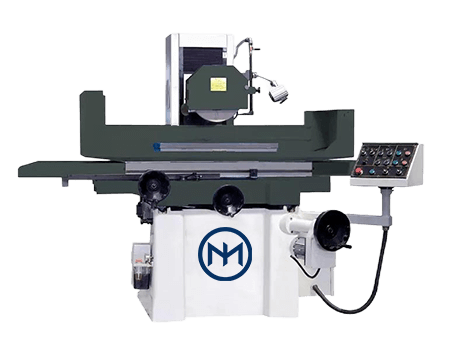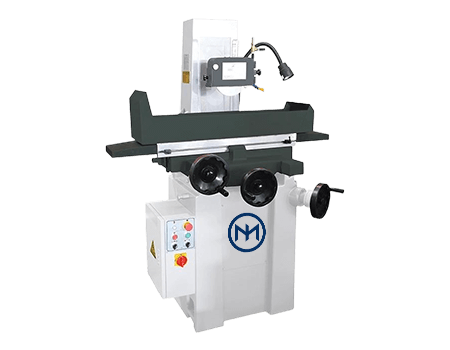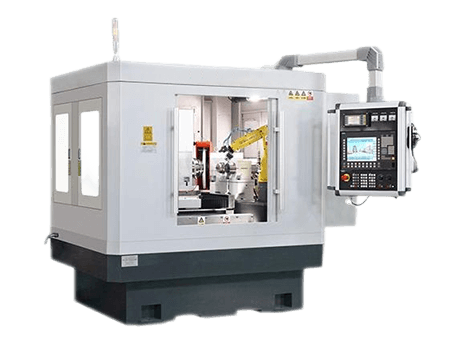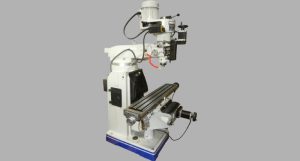Grinding machines are an essential tool in the manufacturing industry. They play a critical role in the production process. Understanding the functionalities, types, and applications of grinding machines can significantly enhance your knowledge and decision-making abilities when it comes to selecting the right equipment.
Grinding machine, also known as a grinder, is a powerful tool used for grinding workpieces. It uses an abrasive wheel as the cutting device to shape and finish materials, ensuring high precision and surface finish.
Imagine being able to achieve a flawless finish on a piece of metal or ensuring that your product meets the highest standards of accuracy and precision. This is the magic of grinding machines. Let’s dive deeper into this essential machinery.
What is a Grinding Machine?
A grinding machine is a tool used to perform grinding operations, which involve removing material from a workpiece by using an abrasive wheel. The primary function of a grinding machine is to achieve high precision and surface finish on metal or other materials, making it an indispensable tool in the manufacturing industry.
History of Grinding Machines
The history of grinding machines dates back to ancient times when humans used stones to grind grains and tools. Significant advancements in grinding technology have occurred over the centuries, with key milestones including:
- Early Ages: Humans used stones for grinding grains and tools.
- 16th Century: Leonardo da Vinci sketched a machine concept for grinding.
- 1830s: The first modern grinding machine, developed by the American inventor Eli Whitney, to produce uniform and interchangeable parts.
- 1870s: Brown & Sharpe developed the first universal grinding machine.
- 1900s: Introduction of CNC (Computer Numerical Control) grinding machines, enhancing precision and automation.
- 21st Century: Modern advancements include high-speed grinding and the development of eco-friendly grinding processes.
How Does a Grinding Machine Work?
Grinding machines remove material from workpieces using high-speed abrasive wheels. These wheels, made of bonded abrasive particles, rotate rapidly and act as cutting edges. As the wheel contacts the workpiece, it removes small amounts of material, shaping and finishing it to the desired specifications.
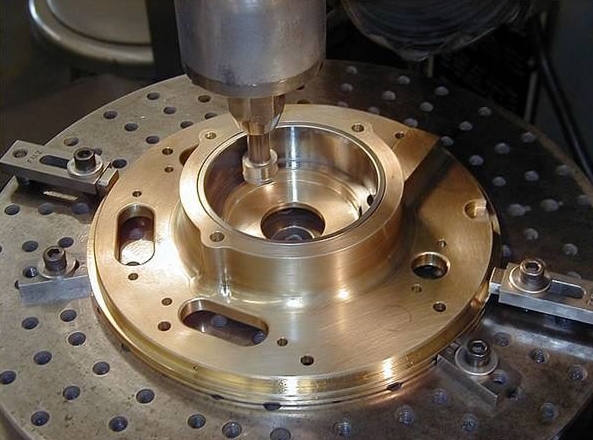
Precision in Grinding Machines
One of the key advantages of grinding machines is their ability to achieve high precision. Modern grinding machines can achieve tolerances of up to 0.001 mm (1 micron), making them ideal for tasks requiring tight tolerances. For example, surface grinders can achieve a flatness within 1 micron per 100 mm of length, and cylindrical grinders can maintain concentricity within 2 microns.
Components of a Grinding Machine
Understanding the components of a grinding machine is crucial for anyone looking to master its operation or make informed purchasing decisions. Each part plays a specific role in the machine’s overall functionality and performance.
A typical grinding machine consists of several key components, each contributing to its overall functionality and performance:
Bed: The base of the machine, providing stability and support.
Table: The platform on which the workpiece is placed.
Grinding Wheel: The abrasive tool that performs the grinding operation.
Headstock: Houses the motor and spindle that rotate the grinding wheel.
Tailstock: Supports the other end of the workpiece.
Control Panel: Allows the operator to control the machine’s functions.
Grinding Machine Uses and Applications
Grinding machines serve various industries and applications. They grind metals and other materials, shape and finish metal parts, sharpen tools, and produce components with very close tolerances. These machines play a crucial role in achieving precise and high-quality finishes.
Grinding machines are used in many different industries for many different applications. Some of the specific applications include:
- Metalworking: Grinding machines are used for shaping and finishing metal parts, as well as for sharpening tools and producing components with very close tolerances.
- Automotive Industry: Grinding machines are used for manufacturing engine parts, transmission components, and other precision parts.
- Aerospace Industry: Grinding machines are used for producing high-precision parts for aircraft engines and systems.
- Electronics: Grinding machines are used for producing precision components for electronic devices.
- Medical Devices: Grinding machines are used for producing surgical instruments and medical implants.
- Tool and Die Making: Grinding machines are used for sharpening and shaping the tools and dies used in manufacturing.
Grinding Machine Types and Prices
There are many different types of grinding machines available on the market, each designed for specific tasks and industries. Knowing the different types and their price ranges can help you choose the right machine for your needs and budget.
There are many different types of grinding machines available, each designed for specific tasks. Here are some brief descriptions and price ranges for different types of grinding machines:
Surface Grinders
– Method: Surface grinders are used to create flat surfaces on a workpiece.
– Features: Surface grinders are capable of producing surface finishes within 1 micron per 100 mm.
– Power: Surface grinders typically range from 1 to 10 horsepower.
– Price Range: Surface grinders can range in price from $2,000 to $50,000, depending on the size and capabilities of the machine.
Cylindrical Grinders
– Method: Cylindrical grinders are used to shape the outside of cylindrical workpieces.
– Features: Cylindrical grinders can produce concentricity within 2 microns.
– Power: Cylindrical grinders typically range from 2 to 15 horsepower.
– Price Range: Cylindrical grinders can range in price from $3,000 to $100,000, depending on the size and capabilities of the machine.
Centerless Grinders
– Method: Centerless grinders are used for high-volume production without the need to mount the workpiece.
– Features: Centerless grinders are suitable for high-volume production with precision.
– Power: Centerless grinders typically range from 5 to 20 horsepower.
– Price Range: Centerless grinders can range in price from $10,000 to $200,000, depending on the size and capabilities of the machine.
Tool and Cutter Grinders
– Method: Tool and cutter grinders are used for sharpening and shaping cutting tools.
– Features: Tool and cutter grinders are versatile and can be used for a wide variety of cutting tools.
– Power: Tool and cutter grinders typically range from 1 to 5 horsepower.
– Price Range: Tool and cutter grinders can range in price from $5,000 to $80,000, depending on the size and capabilities of the machine.
Internal Grinders
– Method: Internal grinders are designed for grinding the internal surfaces of cylindrical parts.
– Features: Internal grinders can achieve internal tolerances within 1 micron.
– Power: Internal grinders typically range from 1 to 5 horsepower.
– Price Range: Internal grinders can range in price from $5,000 to $100,000, depending on the size and capabilities of the machine.
Gear Grinders
– Method: Gear grinders are specifically used for grinding gears to a high precision.
– Features: Gear grinders provide high precision for gear teeth.
– Power: Gear grinders typically range from 5 to 30 horsepower.
– Price Range: Gear grinders can range in price from $10,000 to $300,000, depending on the size and capabilities of the machine.
Jig Grinders
– Method: Jig grinders are high-precision machines used for grinding complex shapes and holes.
– Features: Jig grinders are suitable for precision tool making.
– Power: Jig grinders typically range from 5 to 15 horsepower.
– Price Range: Jig grinders can range in price from $30,000 to $200,000, depending on the size and capabilities of the machine.
Advantages of Grinding Machines
Understanding the benefits of grinding machines can help you recognize their importance in your manufacturing processes. These advantages address common challenges you face with your manufacturing processes.
Grinding machines offer several advantages that help you address pain points and enhance your productivity:
- High Precision: You can achieve tight tolerances and excellent surface finish, which are crucial for high-precision parts.
- Versatility: You can use grinding machines for a wide range of materials and applications, from metalworking to electronics.
- Efficiency: Grinding machines can operate at high speeds, which helps you reduce production time and increase productivity.
- Surface Finish: Grinding machines provide superior surface finish and flatness, which is essential for parts that require a smooth surface.
- Automation: Many modern machines come with CNC controls, which allow you to automate and ensure consistent production.
- Cost-Effectiveness: Although you have to make an initial investment, grinding machines can help you save money in the long run by reducing waste and improving efficiency.
Disadvantages of Grinding Machines
While grinding machines offer numerous benefits, it’s important to be aware of their limitations. Understanding these disadvantages can help you make informed decisions and plan for potential challenges.
Despite their advantages, grinding machines have a few drawbacks:
- Cost: You have to make a significant investment and pay for maintenance.
- Complexity: You need skilled operators to run and maintain grinding machines.
- Wear and Tear: Grinding wheels and other components can wear out quickly, so you have to replace them regularly.
Materials Processed by Grinding Machines
Grinding machines can process a wide variety of materials. The properties of the material determine whether you can use grinding technology for a particular application, which showcases the versatility of grinding technology.
Grinding machines can process different materials with different hardness and applications:
Metals: You can grind steel, aluminum, brass, and more. You use these materials in the automotive, aerospace, and manufacturing industries because they’re strong and durable.
Plastics: You can grind various polymers and composites. You use these materials in the electronics and consumer goods industries for components that require precise shapes.
Ceramics: You can grind hard materials used in medical devices, aerospace, and electronics for their wear resistance and thermal stability.
Glass: You can grind optical components used in telecommunications, medical devices, and scientific instruments.
Each material has its own unique properties, which makes grinding machines versatile and essential in various industries.
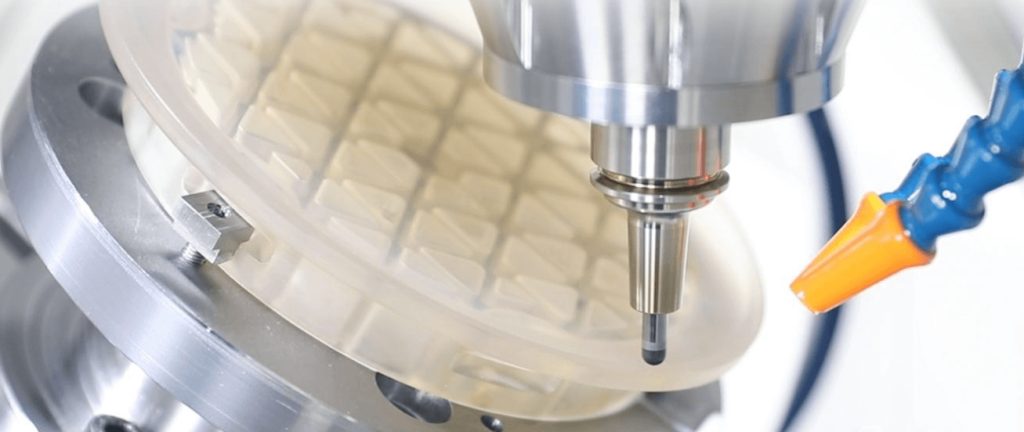
Maintenance of Grinding Machines
Regular maintenance is crucial to ensure your grinding machines perform optimally and last a long time. Proper maintenance can help you avoid unexpected breakdowns and costly repairs, so you can keep your production running.
Proper maintenance is essential for the performance and longevity of your grinding machines. Regular maintenance tasks include:
- Cleaning: You have to keep your machine free of debris and contaminants.
- Lubrication: You have to make sure moving parts are well-lubricated.
- Inspection: You have to check your components regularly for wear and damage.
- Calibration: You have to adjust and calibrate your machine to ensure accurate operations.
By scheduling regular maintenance, you can ensure consistent performance, reduce downtime, and extend the life of your machine.
Common Grinding Machine Problems and How to Fix Them
Grinding machines, like any complex piece of machinery, can have problems. Knowing the most common problems and how to fix them can help keep your grinding machine running smoothly and efficiently.
Here are some common grinding machine problems and how to fix them:
- Chatter: Vibration marks on the workpiece.
- Fix: Make sure the grinding wheel is properly aligned and balanced.
- Burn Marks: Discoloration or overheating. Fix: Adjust the feed rate and make sure there is adequate cooling.
- Wheel Glazing: Loss of cutting ability. Fix: Dress the grinding wheel to restore sharpness.
- Inconsistent Finish: Uneven surface finish. Fix: Check the machine settings and make sure the feed rate is consistent.
Knowing these problems and how to fix them can help you keep your grinding machine running efficiently and producing quality work.
How to Choose the Right Grinding Machine
Choosing the right grinding machine is an important decision that can impact your manufacturing process and the quality of your product. To make sure you choose the right machine for your needs, you need to consider several factors:
Choosing the right grinding machine involves considering several important factors. This will help you make sure you get the machine that is right for your specific needs and will help you produce high-quality work efficiently:
Application: What specific tasks will the machine be used for? Do you need a machine for surface grinding, cylindrical grinding, or tool sharpening?
Material: What type of material will you be grinding? How hard is it? Different materials require different types of grinding wheels and techniques.
Precision: How accurate and how smooth does the surface need to be for your application? Some applications require high precision and very smooth surfaces, which means you need a machine that can hold tight tolerances and produce a very smooth finish.
Budget: How much can you afford to spend? You need to balance the initial cost of the machine with the long-term benefits, such as increased productivity and reduced waste.
Supplier: Who are you going to buy the machine from? Make sure you choose a reputable supplier who will be there to support you after the sale. They should be able to provide training, maintenance, and spare parts to keep your machine running well.
Power and Size: How much power does the machine need? How big is it? Make sure the machine will fit in your shop and that you have the power supply you need.
Ease of Use: How easy is the machine to use? Look for machines with controls and interfaces that are easy to use. CNC-controlled machines can automate many processes, which means you don’t need highly skilled operators to run them.
Maintenance: What kind of maintenance does the machine need? Can you get spare parts easily? Look for machines that are easy to maintain and that have a good support network.
Environmental Impact: What kind of energy does the machine use? What kind of impact does it have on the environment? Look for machines that are energy efficient and that meet environmental regulations.
By considering all of these factors, you can choose a grinding machine that will meet your needs, help you produce high-quality work, and give you many years of service.
The Future of Grinding Machines
The future of grinding machines looks bright. There are several trends that are emerging and will shape the future of grinding machines:
- Automation: More and more grinding machines are being used with robotic and automated systems to make them more efficient.
- Smart Machines: Grinding machines are being integrated with the Internet of Things (IoT) and artificial intelligence (AI) to give users more control and to allow them to monitor the machine more closely.
- Sustainability: Grinding machines are being developed that are more environmentally friendly and that use less energy.
- High-Speed Grinding: Grinding machines are being developed that can grind faster and with more precision, which will reduce cycle times and make the machines more productive.
These trends show that the future of grinding machines is bright. There will be more improvements in performance and sustainability, and grinding machines will continue to be an important part of the manufacturing landscape.
Grinding machines are important tools in many industries. Grinding machines produce parts with high precision and a wide range of shapes and sizes. Knowing the different types of grinding machines, their uses, and maintenance practices will help you make better purchasing and usage decisions.With the improvements in technology that are happening all the time, grinding machines will become even more important and even more efficient in the future.
FAQs
What is the purpose of grinding?
Grinding is a precision machining process used to achieve a high-quality surface finish and tight tolerances on metal and other materials. It involves the use of an abrasive wheel or belt to remove material from a workpiece. The primary purposes of grinding include refining the surface of a part, enhancing dimensional accuracy, and improving the final surface finish. Grinding is essential for achieving fine tolerances and smooth surfaces that are required for many industrial and mechanical applications.
What are the three basic types of surface grinders?
The three basic types of surface grinders are:
- Horizontal Spindle Surface Grinder: This type features a horizontal spindle that rotates the grinding wheel parallel to the workpiece. It is commonly used for precision flat surfaces and can further classify into manual, automatic, and CNC versions.
- Vertical Spindle Surface Grinder: This type has a vertical spindle with the grinding wheel perpendicular to the workpiece. It is ideal for grinding larger workpieces and achieving precise finishes on both flat and irregular surfaces.
- Universal Surface Grinder: Combining features of both horizontal and vertical spindle grinders, the universal surface grinder can perform a variety of grinding tasks. It is versatile and can handle different workpiece shapes and sizes.
What are the three types of cylindrical grinders?
The three types of cylindrical grinders are:
- External Cylindrical Grinders: These grinders machine the external surfaces of cylindrical workpieces. The grinding wheel and the workpiece rotate in opposite directions to achieve the desired finish and dimensions.
- Internal Cylindrical Grinders: These machines grind the internal surfaces of cylindrical workpieces. The grinding wheel is smaller and typically mounted on a spindle that extends inside the workpiece.
- Centerless Cylindrical Grinders: Unlike traditional cylindrical grinders, centerless grinders operate without clamping the workpiece between centers. Instead, they support the workpiece with a work rest and rotate it using a regulating wheel, while grinding it with an abrasive wheel.This method is ideal for mass production and machining small, slender, or fragile workpieces.






